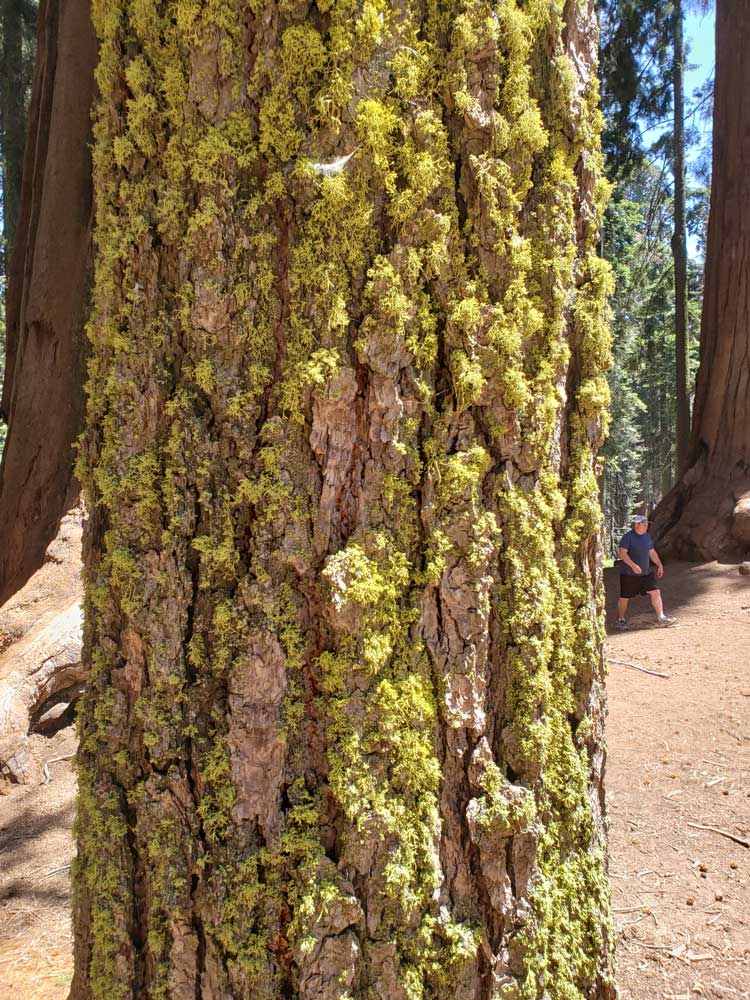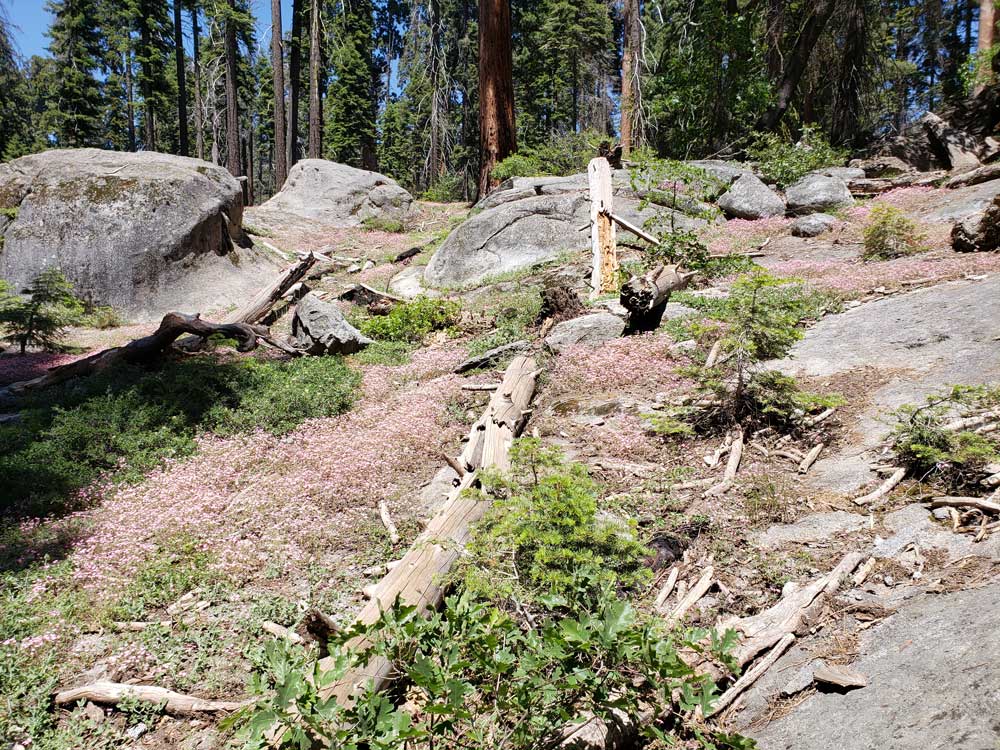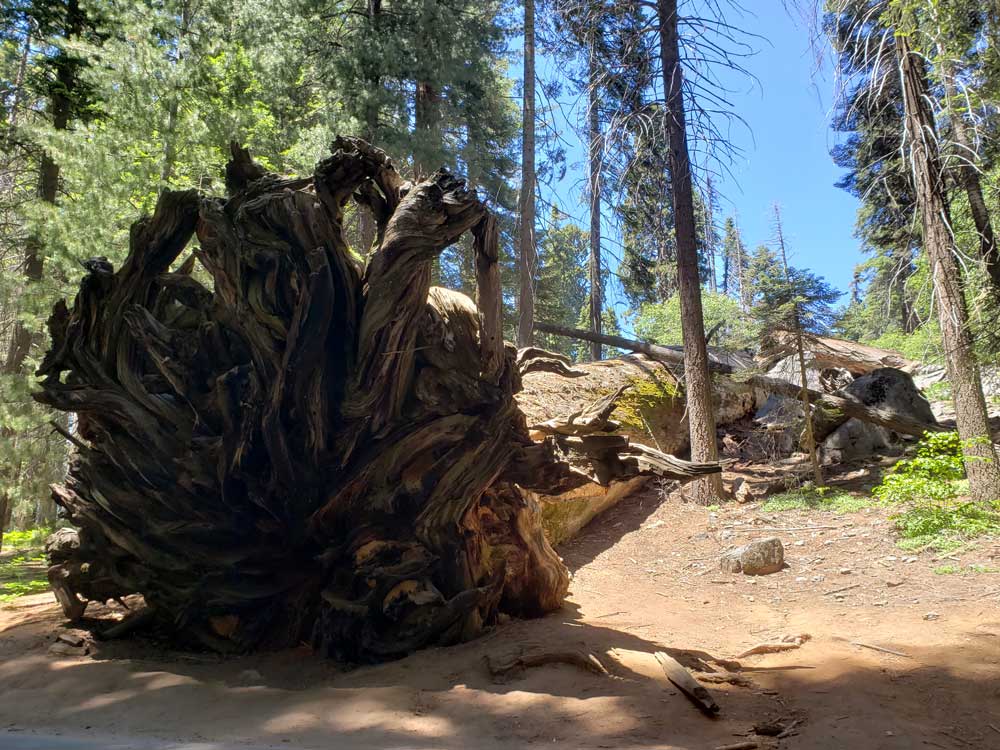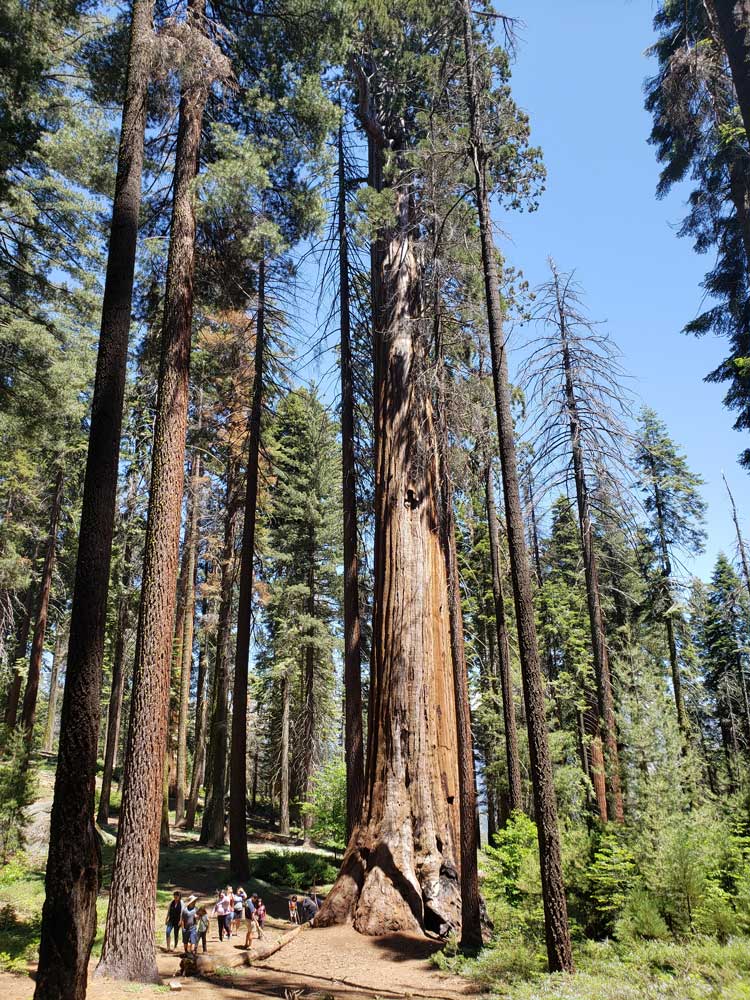Famed for its giant sequoia trees, five of the ten most massive trees on the planet, is the most accessible of all giant sequoia groves, as it has over 40 miles of hiking trails
Overview
The Giant Forest, famed for its giant sequoia trees, is within Sequoia National Park. This montane forest, situated at over 6,000 feet above mean sea level in the western Sierra Nevada of California, covers an area of 1,880 acres. The Giant Forest is the most accessible of all giant sequoia groves, as it has over 40 miles of hiking trails.Five of the ten most massive trees on the planet are located within the Giant Forest. The largest of these, the General Sherman tree, measures 36.5 feet across the base. The giant sequoia tree is the most massive species of tree on earth, and one of just five tree species documented to grow to 300 feet in height (the others are Coast Redwood, eucalyptus regnans, Douglas fir, and Sitka spruce). It is also among the longest-lived of all trees on the planet.
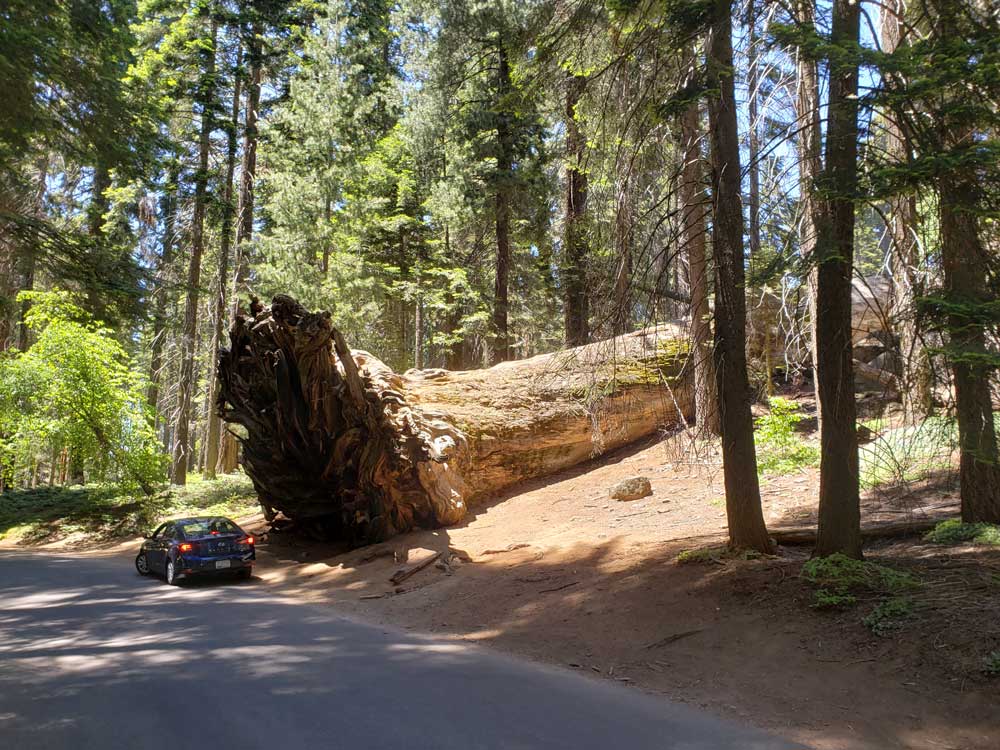
The western trailhead of the High Sierra Trail which crosses the Sierra Nevada to Mount Whitney is at the Crescent Meadow parking area.
Ponderosa, Jeffrey, Sugar, and Lodgepole pine trees are common here, as well as white and red fir. Visitors often see mule deer, Douglas squirrel, and American black bear.
Giant Forest Village
The giant sequoia trees are first encountered on the approach from the south at Giant Forest Village—a small cluster of buildings that is dwarfed by the surrounding trees. The sequoia forest extends mainly east of the village, and is accessed by a three-mile side road plus many interconnecting foot trails. These range from one to five miles in length, leading to various named individual trees and clusters of particular importance. The area is generally quite sheltered and receives high rainfall, which is one reason why the sequoia attain such size.
Access
The forest can be reached from Fresno by State Route 180 or from Visalia by State Route 198. The Generals' Highway connects Giant Forest to Kings Canyon National Park and the General Grant Grove, home to the General Grant tree among other giant sequoias.
Noteworthy trees:
General Sherman: In 1931 this tree was established to be the largest living thing in the world and, therefore, also the largest tree in the world. It has a volume of 52,508 cubic feet. Its largest limb is around 7 feet in diameter. The second-largest tree in the world, the General Grant, is located about 27 miles away in Kings Canyon National Park.
Congress group: A grove located between the General Sherman Tree and the Giant Forest Museum, and further divided into The House and The Senate. The Congress Grove is near the President Tree. It was in 1922, that Colonel John R. White, the superintendent of Sequoia National Park, named the Senate trees to honor the United States Senate. On the Congress Trail, an easy hike of 2 miles (3.2 km) stroll takes you to The Senate. A short additional distance will add other prominent sequoias.
Chief Sequoyah: Just uphill from the President tree is the massive and very impressive Chief Sequoyah. This tree is one of the most strikingly rugged trees in the forest.
Lincoln: This is the fourth-largest tree at 44,471 cubic feet.
Franklin: Although it is the eighth-largest tree in the world, this tree has been largely ignored, perhaps because it is in such a massive grove with many other large specimens. This tree has a huge fire scar on one side and a very large diameter.
Monroe: The tenth-largest tree in the world
General Pershing: The lower trunk is massive and the top is a tapering dead snag.
Column Tree: About 100 yards from the General Pershing is another large sequoia. Its lack of taper makes it the fourteenth-largest giant sequoia.
Adams Tree: From about 90 feet up, the trunk is very irregular with many limb buttresses and much foliage. The top is a maze of limbs.
Cleveland Tree: One of the 40 largest giant sequoias.
Hamilton: A large tree with a volume of 32,783 cubic feet.
Near Ed by Ned: Another tree with an impressive lower trunk, it was measured in 1997 at a volume of 30,333 cubic feet. The tree is located 46 m north of Ed by Ned, hence the name.
Ed by Ned: A pair of intertwined giant sequoia trees located at the southern end of Round Meadow; also known as the "Uncle Ned Tree".
Hazelwood Tree: A large tree that, although reduced by half due to lightning damage sustained in 2002, is still alive.
Washington tree: Once the second-largest tree in the world, a fire in 2003 and snowstorm in 2005 cost it most of its trunk and size, and it is no longer exceptional.
Unnamed Tree: A nameless but unusually tall tree, measured from two different angles to be 303.4 feet tall. With a diameter of 19.5 feet at breast height and a volume probably around 30,000 cubic feet, it is the largest-known sequoia to exceed 300 feet.
This article uses material from the Wikipedia article "Sequoia National Park ", which is released under the Creative Commons Attribution-Share-Alike License 3.0
Featured Locations Trails
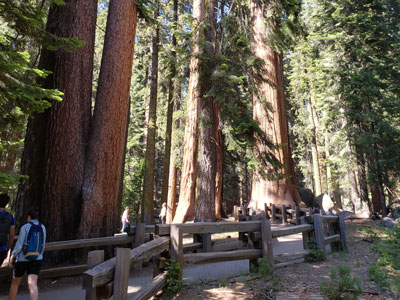
Jeff P from Berkeley, CA, USA, CC BY 2.0, via Wikimedia Commons; Image Size Adjusted
Congress Trail
3.0 miles loop, 495 feet elevation
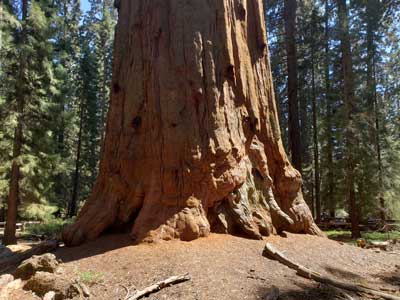
Jeff P from Berkeley, CA, USA, CC BY 2.0, via Wikimedia Commons; Image Size Adjusted
General Sherman Tree Trail
Paved trail that descends from the parking lot to the base of the General Sherman tree and meanders through a grove of giant sequoia trees
